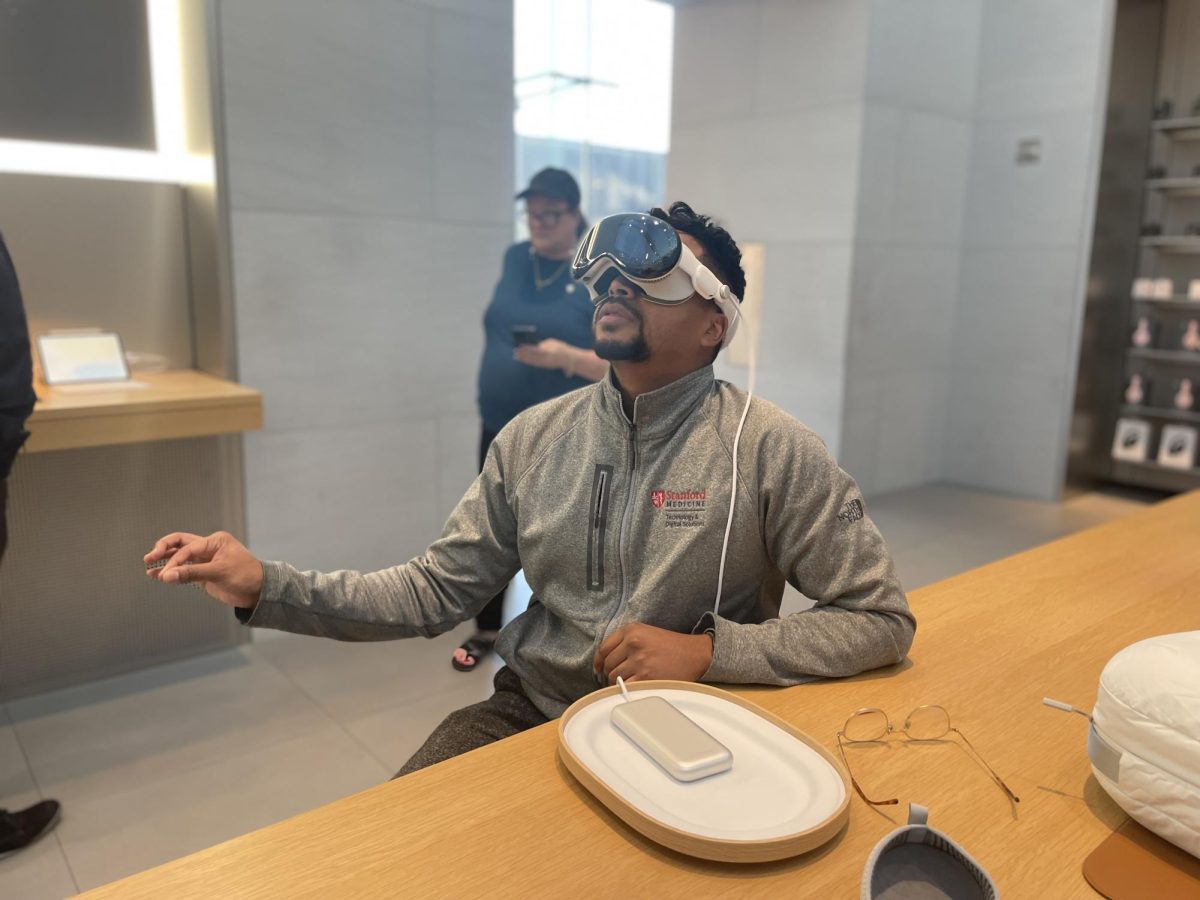First Impressions
Scroll, tap, zoom — that’s all you need to learn to fully immerse yourself in your very own digital mixed reality. The Apple Vision Pro is Apple’s latest product, and feels like the first step the company has taken in a new direction since the Macbook. It’s also an expensive step: $3500 for a prototype, anyone?
First off, it’s not a virtual reality headset. Virtual reality is too low-class for Apple. They call it spatial computing, as the Vision Pro recreates your surroundings digitally instead of simply projecting images in front of your eyes. However, it still functions nearly the same as every other VR headset, so “spatial computing” still has its limits.
Apple has to claim that the Vision Pro is the beginning of something new although people have been building headset computers for over a decade now. All of that development means there are some pretty good products out there, such as the Quest 3 — a very good VR headset with a huge library of games and some VR features of its own, which costs $500.
The Experience
The first time I put on the Apple Vision Pro, I was struck by how well I could see immersive photo in front of me, but also by how different it was to my real eyes. I would have no problem wearing them for a week if it wasn’t for the slight nausea that sets in after a few minutes of use. Much like being in an IMAX theater, it’s hard for your mind to ignore the fact that you’re looking at a screen just inches from your eye.
According to the CEO of Apple, Tim Cook, Apple’s goal for the product was to have people “look through the Vision Pro, not at it.” It’s possible to do it; there is little to no latency, which maxes out around 11 milliseconds, which is impressive for a VR headset.
The problem is that the Vision Pro does not quite fit everyone’s face. For us, there were areas around the bottom of the headset that let a significant amount of surrounding light in, which ruined the immersive experience that the Vision Pro was creating. It was a constant reminder that there was a headset on my face. The Vision Pro’s emphasis on using eye tracking technology instead of controllers began to show its faults around the edges of the screen. When I rolled my eyes to any side too much, I got a severe case of double vision that prompted a sharp wave of nausea.
When it comes to usability, Apple has created yet another stellar product. Everything is intuitive and the eye tracking software never selected something I wasn’t directly looking at. With only your hands and eyes as controllers, the controls were quite simple: tap your thumb and index fingers together to select something, pinch and move both hands to resize, pinch and drag one hand to scroll, and so on. For a revolutionary design of VR headset control, the Vision Pro performs flawlessly.
Main Issues
Even though Apple advertises the Vision Pro as a product that allows you to stay connected with the people around you, it still won’t be anywhere close to face-to-face interactions. The Vision Pro displays a faint replica of your eyes, but it still doesn’t fully erase the disconnect with others. Talking to someone with the Vision Pro will be like talking to someone with Airpods. You’ll never know if they are really paying attention unless they take it off.
At its current state, the Vision Pro is simply too bulky. With all the sensors and technologies Apple packed into it, along with the metal frame, the product weighs almost 1.5 pounds. The lack of an overhead strap also causes the headset to weigh heavily on the wearer’s nose, which could be incredibly uncomfortable and leave marks after long periods of use. For the whopping price of $3500, comfort should have been one of Apple’s biggest concerns, yet it seemed to go unnoticed.
In the future, a change that we might see is Apple cutting down on these two downsides. Instead of this overweight headset, the Apple Vision Pro becomes something much cheaper and more like our everyday sunglasses. Although the product is currently more of a toy than anything else, I do suspect that in the near future, people might be more willing to wear it wherever they go and use their pockets for something other than their cell phone. This is still version one of the Apple Vision Pro and it’s unlikely that this product will ever be worse than it is today.




